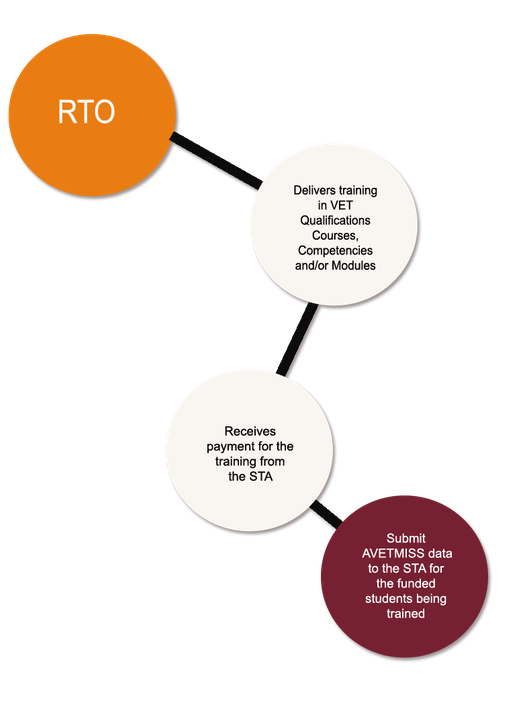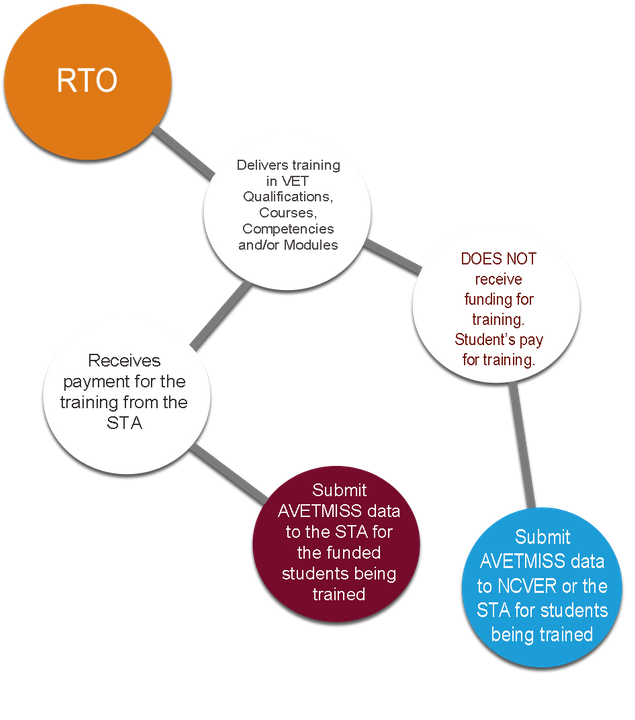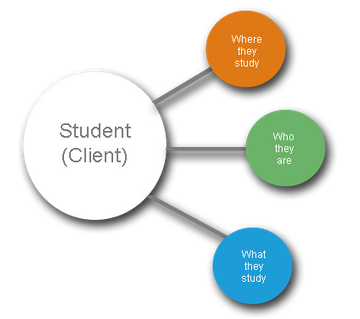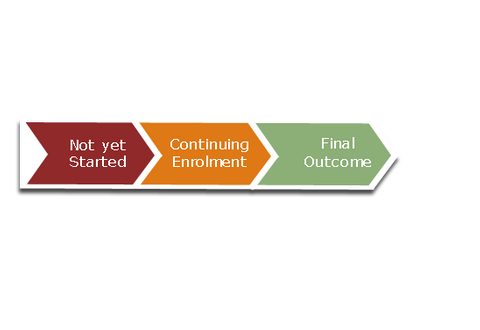AVETMISS 101 - What is AVETMISS
If someone asked you, “What does AVETMISS 101 stand for” or “How does it work” what would you do? More than likely, pass the buck by saying “Ask so and so, they’ll explain it better”.
- When you think of AVETMISS do you just quietly or possibly loudly sigh.
- Resign yourself to the fact that you will never really understand it?
Or maybe you are new to an RTO and haven’t even heard of AVETMISS 101 before! No matter the reason, AVETMISS doesn’t need to be confusing or stressful.
In this article, you'll discover what AVETMISS 101 is and why it's important for RTOs
Don’t waste any more time thinking that AVETMISS is complex and confusing, read this article. Start freeing your time up to spend on strategic and day-to-day tasks.
This is a simple resource to introduce people to an RTO and/or to AVETMISS 101. What and how it works and why it is important. As a result, it is not an in-depth source of technical or legal requirements. Things are deliberately left out in order to avoid confusing the reader.
Table of Contents: AVETMISS 101
- AVETMISS 101: An overview
- Understand RTO types: RTO 101
- VET Student Data Submission for RTO Compliance
- AVETMISS Data Submissions
- Collecting the Right Data
- When and where do we collect the right data?
- Facing the Problem To Collect All The Information
- Student study lifecycle’s impact on AVETMISS data files
- The Student Management System handles individual modules or competencies
- Is your Student Management System (SMS) keeping student outcomes up-to-date?
- AVETMISS Data Submission Requirements
- Best Practices for Data Management in Your Student Management System
- One of the most critical processes for Data Management
- How to check student data in Student Management System
- The NCVER Client Support Team
AVETMISS 101: An overview
The first thing to know is that AVETMISS 101 stands for the Australian Vocational Education and Training Management Information Statistical Standard. A national VET data standard ensures consistent and accurate collection and reporting of VET information.
As part of RTOs compliance requirements, in February of each year, all RTOs have to submit their student data to either NCVER or their State or Territory Training Authority (STA). Depending on what type of RTO you work for or own, will determine where your data is submitted.
NCVER will collect data from CRICOS-registered RTOs that are 100% fee-for-service (FFS). When you receive state funding for training students, you would submit their data to a State Training Authority (STA). You may have chosen to include your FFS student data in your monthly submissions.
On the other hand, you may have chosen to submit your FFS student annually to NCVER, no matter which way you chose to do this, your STA will submit your funded student data to NCVER on an annual basis after you have finalized your funded student data for the calendar year with them.
When you submit your data annually, you will be submitting the previous calendar year’s student data. For example, in February 2019, all RTOs will be submitting their student data for the calendar year 2018.
Understand RTO types: RTO 101
For more information on RTO types, check out our article “RTO 101: What is an RTO“
AVETMISS was first released in 1994 for publicly funded TAFE and government providers to comply with.
It then was released in 1995 for publicly funded adult and community education (ACE) providers and in 1996 all other providers who were publicly funded were required to comply with the standards.
When the AVETMISS 101 standards were released, the above RTOs had to comply with the standards where:
This is still a compliance requirement today for any funded RTO.

VET Student Data Submission for RTO Compliance

However, as with everything in the RTO industry, times have changed and so has compliance requirements.
Since 2015 all RTOs, funded or ffs (fee for service), must submit their VET student data as part of their compliance requirements.
With this change came a lot more pressure on RTOs to improve on their management of not only their compliance requirements but also on their student data.
For the first time, CRICOS RTOs had to change how they did things, many had never issued a result date or used training plans to set when and where a student would commence and complete a unit of competency or module.
Many had to change their enrolment/application forms to ask the questions required to capture the data needed for these submissions.
This new requirement had a major impact on RTOs, not just CRICOS ones, and many still struggle each February to do their annual data submission successfully after a few attempts, let alone on the first upload/submission.
If you are successful on your first upload/submission, then congratulations you have achieved something that very few have been able to achieve and probably do not need to read this article.
AVETMISS data Submissions
Every RTO, regardless of size or type, has a responsibility to manage the quality of its data to meet compliance requirements. On a day-to-day basis, how much data do you collect relating to your students’ or their studies or for your Employers, Agents, Schools and so on?
All this data means something to your RTO and generally a large component of it affects your compliance requirements, especially your AVETMISS data submissions.
Poor data quality costs RTOs large amounts of time, resources and money every year. It is a significant problem not only for compliance management but it can also lead to:
- Inferior customer service
- Reduced employee productivity
- Lost sales opportunities etc.
Collecting the right data
Many RTOs struggle to manage the quality of their data, and there are just as many that has no idea how important the quality of their data is to their compliance requirements.
Data quality management is not rocket science or something to keep at arm’s length or even avoid, it’s something you need to consider seriously and take action to put a plan in place to manage your data.
Firstly, you need to be able to answer the following two questions:
What data do we need to collect to meet our compliance requirements?
When and where do we collect the right data?
And the best way to answer these questions, especially in relation to AVETMISS 101, is to consider the following:
What data do we need to collect to meet our compliance requirements?
For AVETMISS data submissions, you need to collect and submit data in the following areas:
Where they study
This is information about your RTO, such as your RTO name, address, and contact person, as well as what type of provider you are, such as government or private provider.
Who they are
This is information such as the student’s age and gender, demographic information, indigenous & disability information, prior education information as well as where they live.
What they study
This is the largest collection of data and relates to a student’s course of study, what units of competency or modules they are studying, when they started and when they will finish their study for each unit of competency/module.
For each unit of competency/module for the student, how was the training delivered (classroom, workplace etc.), how it was funded and the results (outcome) achieved?

Once you have a list of each piece of data that is required to be collected for a student, then you move on to the next question.
Knowing which student data to collect allows you to identify when and where to collect it. To do so, consider the following student lifecycle stages:

Each point of the above lifecycle is where you can collect specific information as follows:
- Potential Students’ Application: At this stage, RTOs collect information from potential students to meet AVETMISS reporting requirements, including the student’s name, date of birth, contact details, LLN skills, and information about the course of interest.
- Student Commences Study: During the course, RTOs collect data on student progress, including attendance, unit enrolments and completions, and course delivery details.
- Student Completes the Study: Upon course completion, RTOs collect data on the date of completion, qualification code and title, course outcome, and employment status.
In your application form ask for all the relevant information such as:
- Student Name
- Address
- Gender and DOB
- Contact information such as phone, mobile, and work #’s and email address
And then ask specific questions, preferably grouped in a logical order under specific headings such as:
Language and cultural diversity
This is where you can ask questions to collect information relating to:
- Country of birth
- Language spoken at home, other than English
- How well does the student speak English
- Aboriginal or Torres Strait islander origin
Disability/Medical details
This is where you can ask questions to collect information relating to:
- Does the student have a disability or impairment
- Do they require assistance for the disability or impairment
- Ask what the disability or impairment is
Schooling and previous qualifications
Ask questions that collects information relating to:
- Highest level completed at school
- In which year did they complete that level
- Are they still attending school
- Have they completed any qualifications and if yes what level and where
The above is only an example of what you can ask and collect in your application forms. For many RTOs, especially CRICOS ones, they may decide that they won’t ask all of the questions in this part of the lifecycle, that is fine add it to the next part of the lifecycle.
Just remember students don’t always comply and you may have problems getting the answers from them. They generally are more compliant at the application stage.
Facing the problem to collect all the information
This is when you need to collect all of the information you did not collect at the application stage.
From there, you need to keep this information updated and make sure you are staying on top of results for each module/unit of competency for a student. This is probably the biggest data point where RTOs struggle and get it wrong regularly.
It is important to understand that even at this point in the lifecycle of a student, there is a secondary lifecycle for their study itself and it has a major impact on AVETMISS data submissions for both Funded and FFS student data.
Student study lifecycle's impact on AVETMISS data files
It is important to always remember that unless you are only delivering a small set of competencies or modules to a student, that won’t lead to a full Qualification being issued.
For the length of a student’s study with you, there is a lifecycle to it. Especially for the individual competencies or modules they are studying. Moreover, this has an impact on your AVETMISS data files and what should be exported.
Even though your AVETMISS 101 data export will generally always have multiple students and their enrolments in the files, to make this lifecycle easier to understand we will talk about just one student and what they are studying.
STUDENT AND ENROLMENT PROFILE
|
Student Name
|
Sarah Hopkins
|
|---|---|
|
Qualification Code
|
BSB51915
|
|
Qualification Name
|
Diploma of Leadership and Management
|
|
Commencement Date
|
3rd October 2016
|
|
Completion Date
|
29th September 2017
|
|
Total Competencies to complete
|
12
|
UNIT OF COMPETENCIES TO BE COMPLETED SUCCESSFULLY TO BE ISSUED THE QUALIFICATION
|
Competency code
|
Competency Name
|
Core/Elective
|
|---|---|---|
|
BSBPMG522
|
Undertake project work
|
Elective
|
|
BSBRSK501
|
Manage risk
|
Elective
|
|
BSBCUS501
|
Manage quality customer service
|
Elective
|
|
BSBWOR501
|
Manage personal work priorities and professional development
|
Elective
|
|
BSBMGT502
|
Manage people performance
|
Elective
|
|
BSBMGT517
|
Manage operational plan
|
Core
|
|
BSBFIM501
|
Manage budgets and financial plans
|
Elective
|
|
BSBWOR502
|
Lead and manage team effectiveness
|
Core
|
|
BSBLDR502
|
Lead and manage effective workplace relationships
|
Core
|
|
BSBMGT516
|
Facilitate continuous improvement
|
Elective
|
|
BSBLDR501
|
Develop ans use emotional intelligence
|
Core
|
|
BSBLED501
|
Develop a workplace learning environment
|
Elective
|
STUDENT’S TRAINING/STUDY PLAN

As you can see, this student’s course of study (enrolment) will cross over two different calendar years. Typically a student will never commence and complete studying all 12 competencies at the same time; they will be spread out over the entire length of their enrolment.
Where it is classroom based, most RTOs have semesters or terms where they deliver a specific set of competencies. This is very important to understand because it means that only certain competencies will be included in each calendar year AVETMISS data file submission.
Using the above student example, when the RTO was doing a submission to NCVER in 2017 for the 2016 student data, only the modules/competencies that the student was commencing and/or finishing in that calendar year would be included. In this scenario it is:
BSBMGT517
BSBLDR501
The Student Management System handles individual modules or competencies
You need to make sure your Student Management System (SMS) handles module/competency individual start and end dates so that the correct data is in your data submissions and NOT all of it for a student.
The other part to this lifecycle that is critical is the result/outcome for each module/competency. For example, you have to set either a progressive or final outcome for each module/competency and this will change based on the progress of the student’s study.
As you can see there is a mini lifecycle just for results, as below:

The moment a student commences study, you need to have flagged one of two progressive outcomes/results of:
- Not yet started – the student will commence studying the module/competency at a future point (date) of their enrolment
- Continuing enrolment – the student has commenced studying the module/competency
- Final Outcome – this is the outcome/result that your trainer/teacher is awarding the student for that specific module/competency
Is your Student Management System (SMS) keeping student outcomes up-to-date?
Does your Student Management System (SMS) handle these progressive results for you and is there automation around them? If not, then you need to make sure you have staff managing this manually on a periodic basis.
Depending on your intake or term dates and how often your students start and finish their studies etc. So that all outcomes are constantly kept up to date and there is no panic come February and you have thousands of student modules/competencies with the incorrect outcome/result against them.
AVETMISS Data Submission Requirements
This is the time to make sure for each student and their course of study, that the data you have for the student is complete and updated and meets the AVETMISS data submission requirements.
And don’t forget, this includes making sure you have sent to the student, the Quality Indicator Learner Engagement Questionnaire, that as an RTO you must also submit the annual Quality Indicator data report to ASQA in June of each year.
Once you understand what data you have to collect and when and where you will collect it, you then need to put processes in place on how to manage your student data and know who will be entering that data into your Student Management System (SMS).
Best Practices for Data Management in Your Student Management System
It is important that anyone entering data into an SMS and also anyone who is meant to manage the quality of that data, that they understand what problem data is.
For example, it isn’t just about results/outcomes as we mentioned above, it is about something as simple as a student’s address. This is one area where we see many RTOs struggle due to a lack of care by their staff.
The correct standard format for the AVETMISS 101 student address, that should be submitted, would be entered as follows:
Addressing Common Data Entry Mistakes
If you submitted your data in either of the wrong formats or similar, you would have more than one error because the Street #, Street Name, Suburb, State, Post Code and Country are mandatory (highlighted in red) and one or many of the fields are missing information.
The other problem with addresses, that always arises, is the AVETMISS Suburb, State and Post Code, if they do NOT match and are not available on the Australia Post website, then you will have errors.
*** Does your Student Management System (SMS) manage and stop your staff from incorrectly entering a student address for AVETMISS 101 purposes?
If not, you need to not only manage this manually by introducing a data quality check just for student addresses, you have to also insure that your staff understands the impact of entering student addresses incorrectly or that are incomplete.
One of the most critical processes for Data Management
The best way to not only minimise problematic data, but also monitor your staff and identify if they have enough knowledge, skills and understanding to be entering and managing your student data into your SMS, is to implement a regular data quality check.
This could be something you do daily (especially if you have large volumes of students) or weekly, I would not recommend doing it any less than this.
It isn’t just about starting students, it is about all the data you enter into your SMS on a daily basis, the larger majority links to a student and its enrolment (course of study) and you need to stay on top of the quality of the data entered.
Create a process of not only what data is to be checked, but also what is the level of standard required for that data and also include a data quality checklist.
Make sure whomever is doing this quality check, understands the process and what to be looking out for and that they use a checklist to sign off on.
The process should also include a rule of how much data is to be quality checked; our recommendation is at least 10% of all relevant data entered into your SMS should be quality checked.
This means, if you have 50 new students starting in any given week, then randomly the data of 5 students should be fully checked.
This doesn’t just mean quality-checking data linked to students starting, this also includes:
- Results entered that day/week
- Students finishing that day/week
- Starters or finishing students for the next day/week
- Student contact details updated for the day/week
- New qualifications and/or modules/competencies that have starting students for the day/week – have all the required AVETMISS-101 settings be set for them?
How to check student data in Student Management System
Other things to consider and identify if you have processes for managing your student data include asking how often do you check things such as:
- Overdue results – have you considered your trainer/teachers turn around time on issuing results for their students’ modules/competencies?
- Enrolment dates change – when a student changes their start and/or end date of their enrolment (course of study) how often do you staff consider that the individual modules/competencies linked to the enrolment will possibly need the start and/or end dates changed to meet any revised enrolment dates and then change them?
- Upcoming completion of modules/competencies – do you have processes in place to notify trainers/teachers and/or students that they have specific modules/competencies due for completion? Can you easily generate a report from your SMS identifying the students and their modules/competencies that are due for completion?
- Student details updating – if a student is studying with you for let’s say, more than six months, there is a strong chance that their address or contact details will change. Even the answers to the questions they answered from the application form or when they first commenced, may have changed. How do you manage this?
The management of data
*** Does your Student Management System (SMS) provide you reports or processes to assist with the management of data quality checks in the areas above?
When you talk to anyone or read any information relating to AVETMISS 101 the one thing you will hear and/or read about are AVETMISS NAT files. NAT files are text files (.txt format) that contain your student data that you have collected and entered into your SMS.
These are the files that an RTO has to submit to either NCVER or their STA on an annual or where applicable monthly basis. They generally are exported from your SMS in the .txt format and look something like this:

There are ten (10) NAT files in total that are:
NAT00010 – Training Organisation file
NAT00020 – Training Organisation delivery location file
NAT00030 – Program file
NAT00060 – Subject file
NAT00080 – Client file
NAT00085 – Client contact details file
NAT00090 – Disability file
NAT00100 – Prior educational achievement file
NAT00120 – Training activity file
NAT00130 – Program completed file
Although you should always be able to get assistance and help from your SMS service provider, it is highly recommended that you become familiar and comfortable with the NAT files, know the rules and what data is in them and be able to read them.
You can download documents relating to the NAT files from NCVER.
The NCVER Client Support Team
The NCVER client support team are extremely helpful and you shouldn’t be shy to call them when you have questions that you are not able to source answers for yourself.
*** Does your Student Management System (SMS) provider offer AVETMISS data submission errors and assistance to you?
AVETMISS 101 is all about your student data! It is about having the right processes in place to manage the data that your are collecting from students and what and how it is then being entered into your SMS (Student Management System).

